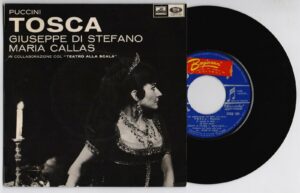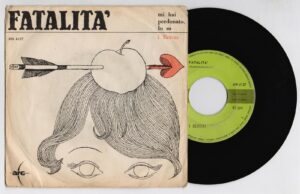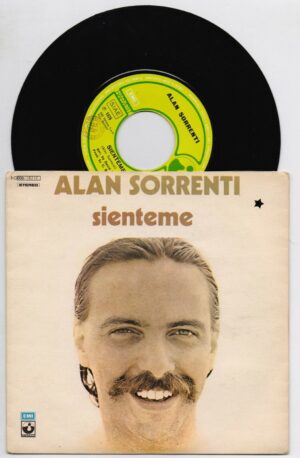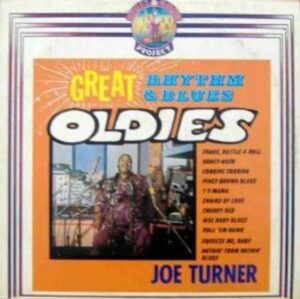Description
PREMESSA: LA SUPERIORITA’ DELLA MUSICA SU VINILE E’ ANCOR OGGI SANCITA, NOTORIA ED EVIDENTE. NON TANTO DA UN PUNTO DI VISTA DI RESA, QUALITA’ E PULIZIA DEL SUONO, TANTOMENO DA QUELLO DEL RIMPIANTO RETROSPETTIVO E NOSTALGICO , MA SOPRATTUTTO DA QUELLO PIU’ PALPABILE ED INOPPUGNABILE DELL’ ESSENZA, DELL’ ANIMA E DELLA SUBLIMAZIONE CREATIVA. IL DISCO IN VINILE HA PULSAZIONE ARTISTICA, PASSIONE ARMONICA E SPLENDORE GRAFICO , E’ PIACEVOLE DA OSSERVARE E DA TENERE IN MANO, RISPLENDE, PROFUMA E VIBRA DI VITA, DI EMOZIONE E DI SENSIBILITA’. E’ TUTTO QUELLO CHE NON E’ E NON POTRA’ MAI ESSERE IL CD, CHE AL CONTRARIO E’ SOLO UN OGGETTO MERAMENTE COMMERCIALE, POVERO, ARIDO, CINICO, STERILE ED ORWELLIANO, UNA DEGENERAZIONE INDUSTRIALE SCHIZOFRENICA E NECROFILA, LA DESOLANTE SOLUZIONE FINALE DELL’ AVIDITA’ DEL MERCATO E DELL’ ARROGANZA DEI DISCOGRAFICI .
PETER BUFFETT
one by one
Disco LP 33 giri , 1989, Narada Mystique / MCA, N – 62004 , Usa
ECCELLENTI CONDIZIONI, vinyl ex++/NM , cover ex++/NM, sealed although open .
Peter Andrew Buffett (born May 4, 1958) is an American musician, composer, and producer. Buffett is the second son of billionaire investor Warren Buffett and his late wife Susan Buffett.
The
composer’s interest in orchestral grandeur is further refined as he
routes various acoustic sources — cellos and guitars to owls and
basketball sounds — through his samplers and keyboards to create thick
timbral tapestries. His Native American interests emerge on several
cuts.
- Interprete: Peter Buffett
- Etichetta: Narada Productions / Mca
- Catalogo: N-62004
- Data di pubblicazione: 1989
- Supporto:vinile 33 giri
- Tipo audio: stereo
- Dimensioni: 30 cm.
- Facciate: 2
- White label, white paper inner sleeve, including “Friend of Narada” invitation coupon / con accluso tagliando adesione “Friend of Narada”
Track Listing
SIDE 1
| 1. | Powder River (2:22) | |
| (Peter Buffett) | ||
| 2. | Sierra (5:10) | |
| (Peter Buffett) | ||
| 3. | Trail Of Tears (4:40) | |
| (Peter Buffett) | ||
| 4. | Sprint (3:36) | |
| (Peter Buffett) | ||
| 5. | The Big Theme (4:05) | |
|
(Peter Buffett)
SIDE 2 |
||
| 1. | One By One (4:07) | |
| (Peter Buffett) | ||
| 2. | Promise (5:33) | |
| (Peter Buffett) | ||
| 3. | December March (3:49) | |
| (Peter Buffett) | ||
| 4. | Sand Creek (8:49) | |
| (Peter Buffett) |
Peter Buffett plays synthesizers and the Synclavier digital audio system.
Recorded Aug-Oct 1988 at Independent Sound, San Francisco, CA,
Mixed Dec 1988 at
DV Productions,
Milwaukee, WI
with
Steve Douglas
Credits
| David Vartanian | Engineer, Mixing |
| Dike Blair | Artwork, Paintings |
| Eric Lindert | Producer, Design, Executive Producer |
| Frank Gosein | Design |
| John Morey | Design |
| Mark Gubin | Portraits, Photography |
| Peter Buffett | Main Performer, Synthesizer, Producer, Synclavier, Multi Instruments, Engineer |
| Randy King | Mastering |
| Randy Kling | Mastering |
| Steve Douglas | Horn, MIDI Horn |
Unlike 1987's _The Waiting_, which featured a lot of electronic
layers and textures, _One By One_ is an electronic music album that
features many acoustic sounds. Buffett uses samples ranging from
English horns, cellos and flamenco guitars to the sounds of crickets,
owls, basketballs, anvils and auto garage grease guns on _One By One_.
Buffett's compositions on _One By One_ are a little more urgent and
ambitious than those on _The Waiting_. "Sprint" is an excellent example
of this as it's very rock-like compared to some of the dreamier tracks
on _The Waiting_. Adding to the sense of urgency, Buffett doesn't
stretch out and hold notes or chords as much as he did on _The Waiting_.
This also helps in giving _One By One_ an acoustic feel, though Buffett
has used his army of electronic equipment to produce everything you
hear.
That army of equipment is housed in the studio Buffett owns with his
wife, Mary. Among other things, Peter uses the Synclavier Digital Audio
System, Kurzweil 1000-PX and 1000-GX, Roland D-110, D-50, MKS-80 Super
Jupiter and MKS-20. Independent Sound is one of the West Coast's most
advanced recording facilities - a futuristic, computer-filled laboratory
where Buffett allows his imagination to run free.
After turning his Bay Area apartment into a recording studio in the
early 80s and opening it to local musicians, Buffett met his wife, Mary.
She helped create a market for Peter's soundscapes among Bay Area
advertising agencies and, in 1982, joined Peter for a remake of "My
Boyfriend's Back," a song that generated a hit video on then fledgling
MTV. This exposure attracted national accounts to Buffett's doorstep
and allowed him to amass more and more sophisticated equipment that
would ultimately be used to record his non-advertising compositions when
a fitting outlet could be found. The outlet he found, of course, is
Narada Mystique.
Narada has gone a long way towards incorporating many of the styles
associated with the term 'New Age music' into a forward moving entity
With releases like Peter Buffett's _One By One_, things are still moving
forward at a nice pace.
Peter Buffett was born in Omaha, Nebraska, and graduated from Central High School in downtown Omaha. He attended Stanford University for one year.
In the 1980’s, he married Mary Lillo. He divorced Mary in May 1991, but adopted his stepdaughters. He married Jennifer Heil.
Artistic career
Buffett began his musical career in the early part of the 1980s in San Francisco. There, he produced albums for local talent. He also was hired by ad agencies to author commercials and logos for MTV and CNN, both of which were at the time new on cable television in the United States. Agencies also hired Buffett to write commercials for Coca-Cola and other notable clients.
Narada Productions, a new age music recording company, signed Buffett to a recording contract. In 1987, Buffett debuted with Narada, releasing an album entitled The Waiting. While working on his second album, One by One, Buffett moved to Milwaukee, home of Narada Productions and closer to his childhood home in Omaha, Nebraska. Buffett would release two more albums with Narada: Lost Frontier and Yonnondio.
While with Narada, Buffett had his first major success, scoring and choreographing the “Fire Dance” in the film, Dances with Wolves. The film score, composed by John Barry, would win an Academy Award.
After Buffett played at the film’s 1991 premiere, John Barry invited
Buffett to collaborate with him once again, this time at the Abbey Road Studios in London. Buffett composed two songs on the soundtrack for The Scarlet Letter.
After the release of Yonnondio, Buffett signed with Epic Records, which in 1994 released his soundtrack for the CBS miniseries 500 Nations, which was produced by Kevin Costner, who also co-produced Dances with Wolves. The miniseries would win the Emmy Award for Outstanding Miniseries in 1995.
In 1996, Buffett produced Star of Wonder, a Christmas CD featuring Celtic harpist Kim Robertson. Buffett married his wife Jennifer Buffett in June 1996. Buffett then signed with Hollywood Records, which released his album Spirit Dance in 1997.
In 1998, Peter Buffett entered the pop music realm with the release of Comet9′s “Like Mercury” on Milwaukee-based independent label Don’t Records,
with Buffett producing, writing and playing multi-instrumentalist.
Co-writer and guitarist Tom Nelson and vocalist Susan Zielke completed
the studio trio, with Citizen King
members D. J. Brooks and Malcolm Michiles guesting on drums and
turntables, respectively. The live band added bassist Josh Warner to
the lineup.
In 1999, his score for the documentary Wisconsin: An American Portrait won the Emmy for Best Soundtrack.
Also in 1999, Buffett was involved with a benefit concert for Jamie and Robert Redford. At this concert, he performed with Hawk Pope, chief of the United Remnant Band of the Shawnee Nation.
Buffett and Pope decided to collaborate, and began touring together in
a live version of the PBS Pledge Special “Spirit”. In 2004 an updated
version of the Buffett-created and composed “Spirit” was performed on
the National Mall during the opening of the Smithsonian National Museum
of the American Indian in its own state-of-the-art 800 seat theater
tent.
In 2006, he released his first vocal album, Gold Star.
Buffett, the 51-year-old son of famed billionaire investor Warren
Buffett, left, plays the keyboards during rehearsals of “Spirit: The
Seventh Fire,” a $3 million, multimedia production featuring American
Indian music and dancers.
|
MUSIC |
PETER BUFFETT
- John
LeKay: I read that you were inspired back in 1987 after having read
“Son of the Morning Star : Custer and the Battle of Little Bighorn” by
Evan S. Connell. What was it about this particular history book that
sparked the transition in your music and how would you describe the
music you were working on at the time?- Peter Buffett: When I read this book, I was amazed at how little I knew about this chapter in American history.
- I
had grown up in the midwest and had no idea how this country was
formed. I was most struck with the question of how much was lost. I
thought of this country as being like a forty year old person that was
wishing he/she had listened to their grandfather when they were ten.
That idea of “if only I could go back and learn all of the knowledge
and insight that comes from someone who has been here before me”. I had
no idea where the Indian voice was today. Where were the country’s
true cultural roots?At the time I had finished my first
album for Narada Records. It was
considered New Age music. I never much
liked the connotation of that. I had
always wanted to be a little more edgy
with my music than that genre seemed to
allow.I was looking for a conceptual
framework for my second record. The book
really spoke to me. But the music had no
typical American Indian musical
references. It was much more about the
feeling of loss and the clashing of
cultures.
- JL:
The music on your album 500
Nations has a visual and
palpable atmospheric
quality. I like your
use of computerized
recording studio technology,
synthesizers, chanting
monks, flamingo ,
rock guitar riffs, blended
and layered with ancient
Native American musical
instruments, flutes, drums,
etc., which has an certain unpredictability.
Can you tell
me how you came about making
this particular album and
discovering some of these
amazing American Indian
voices of today?PB: The CD was a real
breakthrough for me. One of the
editors on the show had heard Chief Hawk
Pope’s vocals and we found him
living in Ohio. He came out to L.A. to
record some songs for the show. I wasn’t
able to be at the session but had lunch
with him afterwards. I had asked permission to
use his vocals in somewhat
unconventional ways – but I wasn’t even
sure what they sounded like.
- After I heard his voice I realized
that there was an incredibly unique
relationship between the music I was
making and the sound and quality of his
voice. Digital recording was in its infancy
then (1994) and I was having so much fun
exploring how I could place his vocals
into my music using this new technology.
Definitely a marriage of the ancient
and the modern. I was really worried
that Hawk would have a problem with what
I had done, but he absolutely loved it. We’ve been working together ever
since. Both in the studio and in live
performance. Douglas Spotted Eagle
is also featured on that CD. I forget
exactly how we met, but he brought his incredible
talents to the CD. Again, I was able to
take his performances and through the
use of digital technology place his
flute playing throughout the CD in a
variety of songs. It was very
liberating to create the soundtrack
because it was focused on the story
telling. So the placement of the various musical styles you
mention made sense based on the stories
being told – this gave me much more
latitude than a conventional CD would
have.
- It really opened up the musical
possibilities for me – which carried
over to other CDs.
JL:
With “Ojibwe Wasa Inaabidaa” and with your previous albums; I found it
interesting how you have merged the diverse elements of this ancient
art form with digital technology. Just as important – your crossing
of cultural and imposed historical boundaries. How do you see these
various factors and what inspired the making of the Ojibwe album?
- PB:
I think one of the keys to my approach is not having any rules. I’m
often asked what research I’ve done or schooling I’ve had (either in
music or native culture/music). As I think I may have said in an
earlier answer, I’ve completely gone with my gut. I combine things that
just feel right to me. Like you say, the boundaries are imposed – I
couldn’t find the reason not to break some of them down!The
Ojibwe documentary that the music was inspired by was in the works for
many years. By the time the scoring work had to be done, I didn’t have
the time to really do most of it – so a friend did much of the actual
scoring with source material the two of us had recorded when Spirit
toured in Minneapolis in 1999. When it was finally all done, I was sent
all these recordings of the amazing performances you hear on the CD
(without any of the music attached). It is incredibly inspiring to
write music to set these performances inside of – much like I did with
Hawk Pope in 500 Nations.With 500 Nations, the score came first. With Ojibwe, it was really the performances that inspired the music.






